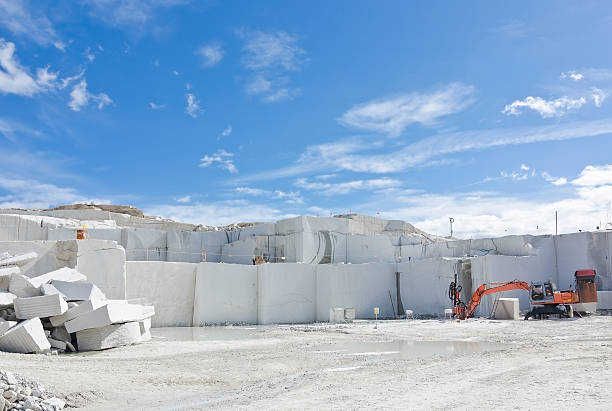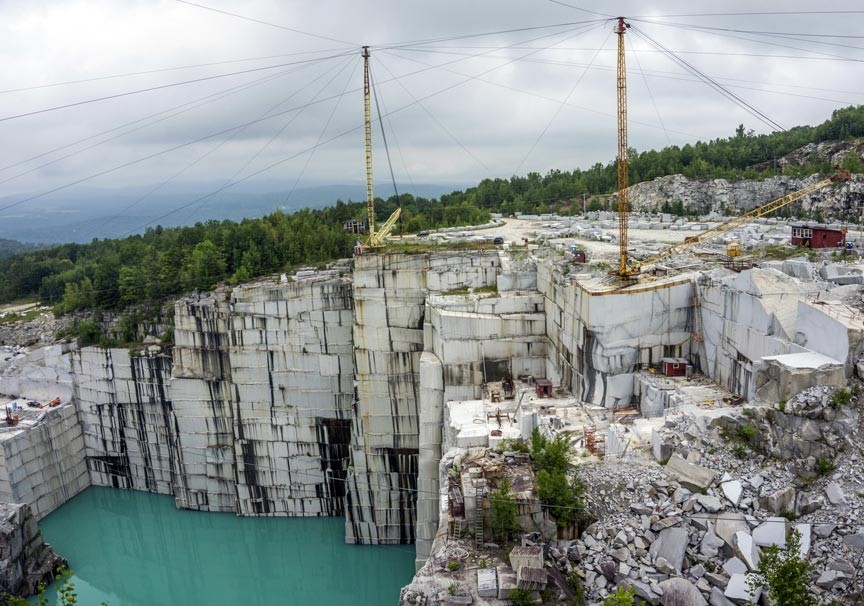Unearthing the Rich Background and Lasting Practices of Granite Quarrying
As we base on the precipice of revealing the detailed tapestry of granite quarrying, a journey via time reveals not simply the physical act of drawing out stone however additionally the cultural and historical value woven into the really fabric of this method. From the old origins that laid the structure for contemporary quarrying strategies to the sustainable techniques that are shaping the future of this sector, each sculpt mark on granite surface areas narrates waiting to be discovered (granite quarries in south africa). The legacy of granite quarrying extends far beyond mere extraction; it is a testament to human ingenuity, resilience, and the long-lasting attraction of this impressive rock
Old Origins of Granite Quarrying
Dating back to old people, the practice of quarrying granite has been an essential part of human background and building development. The earliest proof of granite quarrying go back to old Egypt, where huge pyramids and detailed sculptures were crafted from this sturdy stone. The Egyptians utilized primitive tools to draw out granite blocks from quarries, showcasing the value of this product in their huge constructions.
Progressing in history, the Greeks likewise made considerable payments to the quarrying of granite. The Greeks utilized granite in numerous building wonders, such as holy places and statuaries, showing their ability in shaping and sculpting this hardy stone. The Romans even more fine-tuned the methods of quarrying granite, employing innovative devices like chisels and hammers to extract and shape granite for their renowned structures.
Through the centuries, the method of quarrying granite has actually evolved, with modern-day innovations improving effectiveness while maintaining the timeless appeal of this all-natural rock - granite quarries in south africa. From ancient worlds to contemporary builders, the legacy of granite quarrying remains to shape our world
Advancement of Quarrying Strategies
The development of quarrying techniques has actually been noted by a constant progression in the direction of higher effectiveness and precision in removing granite. From the fundamental techniques employed by our forefathers to the sophisticated technologies made use of in contemporary quarrying operations, the market has undertaken considerable developments. Early quarrying strategies included manual work with standard tools such as knives, hammers, and wedges to draw out granite blocks from the earth. As civilizations proceeded, methods like fire-setting and primitive explosives were introduced to facilitate the removal procedure.
In more current times, the advent of equipment reinvented the quarrying industry, enabling faster removal rates and enhanced efficiency. Technologies such as ruby wire saws, high-pressure water jets, and pneumatic drills have ended up being standard in contemporary quarries, enabling specific cutting and reduced waste. Additionally, improvements in computer-controlled tools and 3D modeling have actually maximized quarrying procedures, leading to very little ecological effect and boosted sustainability techniques. As the demand for granite continues to rise, the evolution of quarrying techniques remains essential to meeting market needs effectively and sustainably.
Cultural Relevance of Granite
Granite holds an extensive cultural significance throughout numerous human beings due to its long-lasting existence in architectural work of arts and revered monoliths. From the stunning pyramids of Egypt to the detailed carvings of the Angkor Wat temple in Cambodia, granite has been a product of option for expressing grandeur and durability in cultural heritage. In old Rome, granite columns decorated holy places and public buildings, signifying stamina and durability. The cultural value of granite prolongs past its physical characteristics; it personifies durability, security, and timelessness, making it an icon of withstanding heritages and customs.

Sustainable Practices in Quarrying
In the middle of the abundant background of granite quarrying and its cultural importance lies a growing emphasis on sustainable methods within the market. As ecological awareness and issues regarding source deficiency have actually enhanced worldwide, the quarrying industry has significantly welcomed lasting approaches to decrease its impact on the environment and surrounding neighborhoods.

Furthermore, recovery and rehabilitation of quarry websites post-extraction are indispensable to sustainable practices. By bring back quarried locations to a natural or beneficial state, such as creating wildlife habitats or leisure areas, quarriers can counter the ecological impact of their operations and add positively to the local community.
Tradition of Granite Quarrying
With a historic backdrop steeped in craftsmanship and industrial progress, what enduring impact has granite quarrying left on the landscape of modern society? The legacy of granite quarrying transcends plain removal techniques; it has actually formed building wonders, city landscapes, and social heritage worldwide. The sturdy nature of granite has actually made it a recommended selection for monoliths, structures, and facilities, standing as a testament to the skill and creativity of quarry workers across generations.
Additionally, the economic footprint of granite quarrying can not be ignored. The sector remains to give work opportunities and drive local economies in regions where granite my website removal is common. It has also stimulated technical improvements in quarrying methods and tools, causing much more efficient and lasting methods.
In terms of sustainability, the tradition of granite quarrying consists of efforts to minimize environmental influences through improvement tasks and accountable source management. By stabilizing financial interests with ecological stewardship, the sector strives to make certain that future generations can continue to take advantage of this long-lasting natural deposit.
Conclusion
